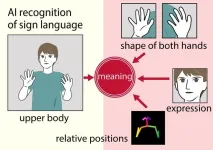(Press-News.org) The discovery of two new planets beyond our solar system by a team of astronomers from The University of Warwick and the University of Geneva (UNIGE), is challenging scientific understanding of how planetary systems form.
The existence of these two exoplanets - an inner super-Earth and an outer icy giant planet - within the WASP-132 system is overturning accepted paradigms of how ‘hot Jupiter’ planetary systems form and evolve.
Hot Jupiters are planets with masses similar to those of Jupiter, but which orbit closer to their star than Mercury orbits the Sun. There is not enough gas and dust for these giant planets to form where they are observed, so the accepted theory is that they originate far from their star and migrate inward as the planetary system evolves.
Until now, hot Jupiters were thought to orbit their star alone, as migration towards the star would eject other planets in the system. The research team’s recent observations of two extra planets in the WASP-132 system now calls into question this theory.
David Armstrong, Associate Professor of Physics, The University of Warwick said, “The detection of the inner super-Earth was exciting as it’s particularly rare to find planets interior to hot Jupiters. We carried out an intensive campaign with state-of-the-art instruments to characterise its mass, density and composition, revealing a planet with a density similar to that of the Earth”.
This planetary discovery adds a layer of complexity to the WASP-132 system as migration of a hot Jupiter towards its star through dynamical perturbation would destabilise the orbits of the other two planets. This suggests a more stable ‘cool’ migration path for the hot Jupiter in a proto-planetary disc that surrounds a young star and is the site of planet formation.
“The WASP-132 system is a remarkable laboratory for studying the formation and evolution of multi-planetary systems. The discovery of a hot Jupiter alongside an inner super-Earth and a distant giant calls into question our understanding of the formation and evolution of these systems. This is the first time we have observed such a configuration”, says François Bouchy, Associate Professor, Department of Astronomy, UNIGE Faculty of Science.
The hot Jupiter orbits its star in seven days and three hours; the super-Earth (a rocky planet six times the mass of the Earth) orbits the star in just 24 hours and 17 minutes; and the icy giant (five times the mass of Jupiter) orbits the host star in five years. The precise measurements of radius and mass have also made it possible to determine the density and internal composition of the planets. The super-Earth composition is dominated by metals and silicates, similar to that of Earth.
Observations of WASP-132 continue, with the ESA's Gaia satellite measuring minute variations in the positions of stars since 2014, with a view to revealing their planetary companions and outer brown dwarfs.
The full paper is a collaboration between Warwick and the University of Geneva and can be read in Astronomy & Astrophysics: 2025, A&A, 693, A144
DOI: 10.1051/0004-6361/202348177
Notes to the editor
In 2006, research began on exoplanets as part of the Wide Angle Search for Planets (WASP) programme.
University of Warwick
The University of Warwick is one of the UK’s leading universities, marking its 60th anniversary in 2025. With over twenty-eight thousand students from 147 countries, it's currently ranked 9th in the UK by The Guardian University Guide. It has an acknowledged reputation for excellence in research and teaching, for innovation, and for links with business and industry. The recent Research Excellence Framework classed 92% of its research as ‘world leading’ or ‘internationally excellent’. The University of Warwick was awarded Midlands University of the Year by The Times and Sunday Times.
END
Discovery of two planets sheds new light on the formation of planetary systems
2025-01-15
ELSE PRESS RELEASES FROM THIS DATE:
New West Health-Gallup survey finds incoming Trump administration faces high public skepticism over plans to lower healthcare costs
2025-01-15
WASHINGTON, D.C. — Weddnesday, Jan. 15, 2025 — Nearly half of Americans (46%) think the country is headed in the wrong direction when it comes to the incoming president’s policies to lower healthcare costs, while 31% say it’s on the right track, according to the latest West Health-Gallup survey released today.
When viewed through a political lens, only Republicans are more positive than negative about the future of healthcare costs under the Trump administration; nearly three-quarters (73%) think the incoming administration’s healthcare policies are headed in the right direction. In contrast, 24% of independents and 3% of Democrats say the same. Democrats ...
Reading signs: New method improves AI translation of sign language
2025-01-15
Sign languages have been developed by nations around the world to fit the local communication style, and each language consists of thousands of signs. This has made sign languages difficult to learn and understand. Using artificial intelligence to automatically translate the signs into words, known as word-level sign language recognition, has now gained a boost in accuracy through the work of an Osaka Metropolitan University-led research group.
Previous research methods have been focused on capturing information about the signer’s ...
Over 97 million US residents exposed to unregulated contaminants in their drinking water
2025-01-15
Nearly a third of people in the U.S. have been exposed to unregulated contaminants in their drinking water that could impact their health, according to a new analysis by scientists at Silent Spring Institute. What’s more, Hispanic and Black residents are more likely than other groups to have unsafe levels of contaminants in their drinking water and are more likely to live near pollution sources.
The findings, published in the journal Environmental Health Perspectives, add to growing concern about the quality of drinking water in the United States and the disproportionate impact of contamination ...
New large-scale study suggests no link between common brain malignancy and hormone therapy
2025-01-15
CLEVELAND, Ohio (Jan 15, 2025)–It’s not easy being a woman. Just look at the statistics. Women are more likely to have such debilitating conditions as osteoporosis, migraines, Alzheimer disease, depression, multiple sclerosis, and brain tumors. Sex hormones are often blamed. However, a new study suggests no link between hormone therapy (HT) and common brain tumors known as gliomas. Results of the study are published online today in Menopause, the journal of The Menopause Society.
The debate over the risks and benefits ...
AI helps to identify subjective cognitive decline during the menopause transition
2025-01-15
CLEVELAND, Ohio (Jan 15, 2025)—Artificial intelligence (AI) is positioned to make a major impact on almost every industry, including healthcare. A new study suggests that machine learning models can more quickly and affordably identify women with severe subjective cognitive decline during the menopause transition, effectively opening the door to better management of cognitive health. Results of the study are published online today in Menopause, the journal of The Menopause Society.
Subjective cognitive decline refers to a person’s ...
Machine learning assisted plasmonic absorbers
2025-01-15
Light absorption is a cornerstone for several applications such as solar cells, photodetectors, and optical sensors, to name a few. Yet, the trade-off between the thickness of the absorber and its efficiency has long limited the performance of such devices. The goal in this investigation is to get the best of both worlds—ultra-thin materials with maximized absorption.
In a recent paper published in Light: Science & Applications, a group of researchers from King Abdullah University of Science and Technology (KAUST), led by Prof. Ying Wu and Prof. Xiangliang Zhang (now at University of Notre Dame), successfully put forward an efficient broadband light absorber ...
Healthy lifestyle changes shown to help low back pain
2025-01-15
Low back pain is a leading cause of disability worldwide with many treatments, such as medication, often failing to provide lasting relief. Researchers from the University of Sydney’s Centre for Rural Health have uncovered a possible solution. Their study, published in JAMA Network Open, found integrating lifestyle support into back pain care could reduce disability and enhance quality of life.
The randomised controlled trial included 346 participants from across Australia, all of whom had chronic low back pain and at least one lifestyle risk factor, such as obesity, poor diet, sedentary habits, or smoking. Participants were randomly assigned ...
Waking up is not stressful, study finds
2025-01-15
Waking up does not activate an increase in the release of the stress hormone cortisol. Cortisol does, however, increase in the hours prior to wakening as part of the body’s preparation for the next day, new research led by the University of Bristol has found. The study is published today [15 January] in the Proceedings of the Royal Society B.
For many years it has been generally accepted that waking up results in a stimulus to release hormone cortisol - a phenomenon called the “cortisol awakening response” (CAR). This response has been used to investigate many clinical conditions including PTSD, depression, obesity, and chronic ...
Texas A&M AgriLife Research aims for better control of widespread tomato spotted wilt virus
2025-01-15
MEDIA INQUIRES
WRITTEN BY
Laura Muntean
Olga ...
THE LANCET DIABETES & ENDOCRINOLOGY: Global Commission proposes major overhaul of obesity diagnosis, going beyond BMI to define when obesity is a disease.
2025-01-15
The Lancet Diabetes & Endocrinology: Global Commission proposes major overhaul of obesity diagnosis, going beyond BMI to define when obesity is a disease.
Current medical approaches to diagnosing obesity rely on BMI which is not a reliable measure of health or illness at the individual level. This can result in misdiagnosis with negative consequences for people living with obesity and wider society.
The Commission on Clinical Obesity recommends a new, nuanced approach where measures of body fat - for example, waist circumference or direct fat measurement - in addition to BMI are used to detect obesity, therefore reducing the risk of misclassification.
Additionally, the ...


